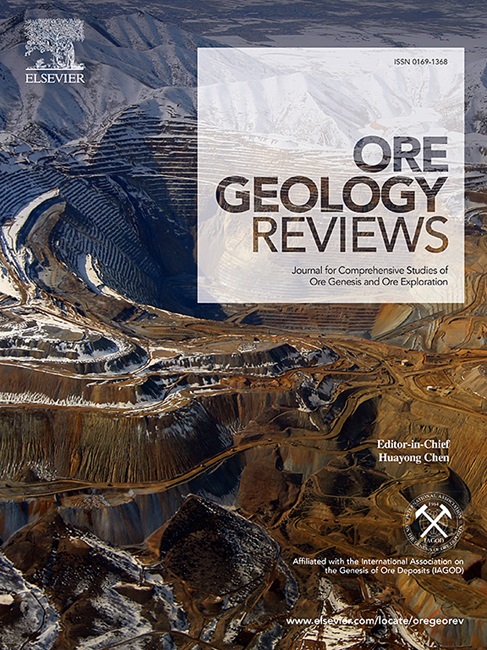Constraining the fluid sources of gold-bearing veins in orogenic belts using sulfur and lead isotopes: A case study from Loch Tay, Scotland (UK)
IF 3.2
2区 地球科学
Q1 GEOLOGY
引用次数: 0
Abstract
Unpicking the fluid and metal sources, and the number of mineralizing events, can be challenging because fluids from different origins mix and can overprint existing mineralization. Crustal and/or basinal fluids may play a role in “diluting” magmatic or mantle fluids and can have a significant impact on the isotope composition of the precipitated phases in an ore deposit, which ultimately leads to difficulties in classifying the deposit style. We present a case study of this problem from the southern margin of Loch Tay (Scotland). The results from sulfur and lead isotope studies indicate that magmatic-hydrothermal processes were responsible for the establishment of the mineralizing system, but this signature gets progressively obscured in some localities due to mixing between magmatic-hydrothermal and crustal fluids. Indications of two separate mineralization events have been observed, but differentiating the first stage from the second one is challenging. Our study demonstrates the need to understand the characteristics of the mineral system and the geological setting to support robust interpretation. The results also have implications for regional exploration models: we suggest that the majority of the auriferous vein occurrences at Loch Tay are probably of a magmatic origin, rather than of an “orogenic gold” type. Furthermore, the veins around Loch Tay provide a case study of how vein-hosted gold mineralization with some orogenic characteristics may be related to magmatism, suggesting that isotope data from other auriferous veins globally may be misinterpreted due to fluid mixing, particularly if the regional context is poorly understood.

求助全文
约1分钟内获得全文
求助全文
来源期刊

Ore Geology Reviews
地学-地质学
CiteScore
6.50
自引率
27.30%
发文量
546
审稿时长
22.9 weeks
期刊介绍:
Ore Geology Reviews aims to familiarize all earth scientists with recent advances in a number of interconnected disciplines related to the study of, and search for, ore deposits. The reviews range from brief to longer contributions, but the journal preferentially publishes manuscripts that fill the niche between the commonly shorter journal articles and the comprehensive book coverages, and thus has a special appeal to many authors and readers.
 求助内容:
求助内容: 应助结果提醒方式:
应助结果提醒方式:


